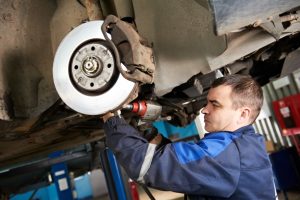According to the Centers for Disease Control (CDC), around 3 million older people are rushed to the emergency department due to fall injuries each year, and the mortality rate has steadily increased over the years, with the CDC stating that there would be 7 fall deaths every hour by the year 2030. Additionally, the majority of hip fractures and traumatic brain injuries are caused by falling. That said, it’s important for a home to take necessary precautions to prevent falls by eliminating slipping and tripping hazards especially if there are elderly loved ones at home. Today, we’ll be focusing more on tripping hazards at home and how to avoid them:
Throw Away Your Throw Rugs
Rugs are one of the most common culprits when it comes to fall injuries as they tend to clump up, stick out, and become a tripping hazard. If you have elderly loved ones at home, it’s best to do away with throw rugs or anchor them to the floor to prevent them from clumping and moving, or better yet use a secure non-slip area rug instead.
Clean the Clutter
Children’s toys, tools, small boxes, and any object on the floor can be a tripping hazard. As such, it’s important that you regularly clean the clutter on the floor to avoid your elderly loved ones from tripping or stepping on them. You also have to watch out for your kids leaving clutter on the stairs to prevent oftentimes lethal falls.
Watch the Stairs
Stairs are already difficult to traverse for the elderly, especially those with limited mobility. Not only do you need to have stairs free of clutter, but it’s important that the steps aren’t too steep, too long, or are irregular in height as they can be easily tripped on. It’s also good to consider adding wall handrails and better lighting as an extra safety measure for your stairs.
Extension Cords and Wires

Leaving cords along the hallway or just sprawling all over the floor is a recipe for disaster. Not only would it end up pulling the appliance it is attached to, but it can cause trips that may result in a broken hip among the elderly.
Cracked or Uneven Sidewalks, Patios, and Walkways
Concrete sidewalks, patio floors, concrete slab driveways, and walkways leading to and from your home can eventually crack (or stick out unevenly, in the case of concrete slabs) due to either poor construction, bad soil grading, impact, or even earthquakes. Concrete areas and paths outside your home are both tripping and slipping hazards as concrete even tend to get slippery when it gets wet. As such, it’s important for you to check not only the inside of your house but the outside as well when trip-proofing your home. You can fill in cracks and attempt to level the area yourself, or you can opt to hire your local concrete leveling service providers in Salt Lake City to professionally do it for you.
Conclusion
Fall-proofing your home by eliminating trip hazards is integral in keeping your aging loves ones (as well as anyone at home) from getting injured or worse. That said, take a few minutes to walk around and outside your house to identify any tripping hazards and see what you can do to improve your home’s safety.














